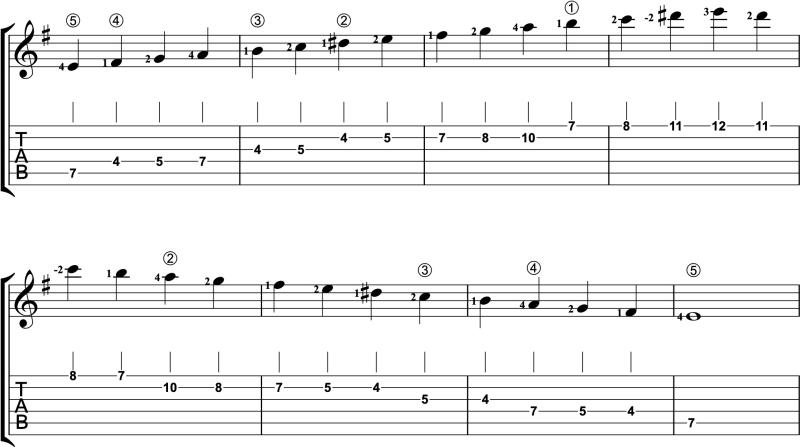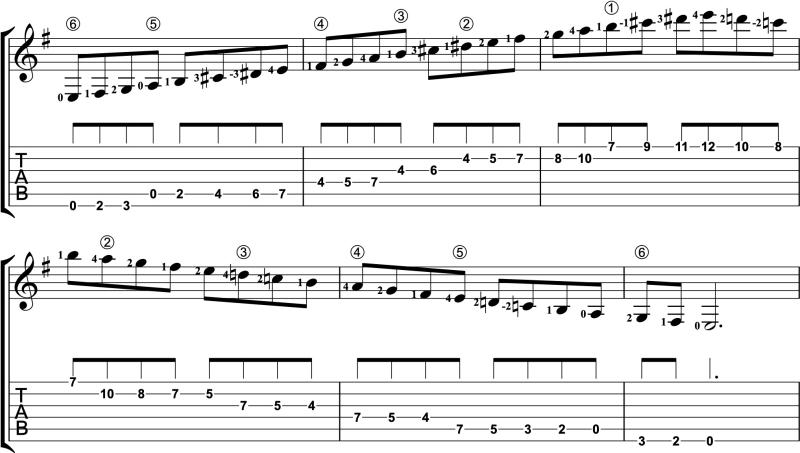How to play an E minor scale on guitar
Let’s learn how to play an E minor scale on guitar.
E minor Note Names
Here are the note names in the E minor scale:
E – F# – G – A – B – C – D – E
Key Signature
E minor has only one sharp in the key signature: F#.
The three minor scales
There are three kinds of minor scales: natural, harmonic, and minor. They are all very closely related to one another, but each has slight differences from the other. Each scale appears in different contexts and for different reasons.
The natural minor scale consists of all of the notes we looked at above. The harmonic minor scale is almost exactly the same, but raises the D one half step to become D#. Likewise the melodic minor scale is like the harmonic minor, but it also raises the C to a C#. But the melodic minor scale has one other unique quality. We only raise the C and D to C# and D# on the way up the scale. On the way back down the scale we use the natural notes, C natural and D natural.
To recap:
- E natural minor: E – F# – G – A – B – C – D – E
- E harmonic minor: E – F# – G – A – B – C – D# – E
- E melodic minor: E – F# – G – A – B – C #– D# – E (ascending); E – F# – G – A – B – C – D – E (descending)
One-octave E natural minor scale

One-octave E harmonic minor scale
The addition of the D# to the harmonic minor scale makes for a big stretch between the 1 and 4 fingers. Make sure your 1 finger is close up against the fretwire to give your 4 enough space to avoid buzzing.

E harmonic minor two-octave scale
Now let’s move up into fourth position and play a two-octave scale. This scale involves two shifts. Hold on to the last note before the shift for its full duration and shift quickly and gracefully. When shifting we want to avoid cutting the last note before the shift short. But we also want to be sure not to accent the first note after the shift. So work to shift quickly and gracefully without accents.

Three-octave E melodic minor scale
The three-octave melodic minor scale takes us from the open-E sixth string all the way up to the twelfth fret on the first string. So, again, there are several shifts. Pay close attention not only to the sharps on the way up the scale but also the natural signs on the way down!

The E minor guitar scale in repertoire
E minor is perhaps the most well-known guitar key because it has four open strings that are part of the E minor chord. And that means we have a ton of great music in this key on classical guitar. Here are some examples:
Evocacion from Suite del Recuerdo by Jose Luis Merlin
Bourrée from Lute Suite in Em (BWV 996) by J.S. Bach
Lección No.4 by Julio Sagreras
Adelita by Francisco Tárrega

Leave A Comment